If you’re sick of playing tug-of-war with the Facebook algorithm, we get it.
Trying to grow your reach is a struggle right now, especially for up-and-coming brands.
That’s why it’s so important to figure out exactly why certain pieces of content get shared like crazy (and why some pages get, like, zero engagement).
Doing so starts by understanding the Facebook algorithm actually works.
The good news is that Facebook is surprisingly transparent about what they want to see from brands.
In this guide, we’ll break down Facebook’s most important ranking factors and how to make sure your content gets the attention it deserves.
What is the Facebook Algorithm, Anyway?
The Facebook algorithm represents the platform’s engine that determines how content is ranked and gets served to users.
Organic reach on Facebook is based on a combination of machine learning and ranking factors including:
- “Likes,” comments, and shares
- Previous engagements and activity on Facebook ads
- Interests and audience demographics (think: location, age, and so on)
- Interactions with other Pages and accounts
- Post timing and captions
News flash: just because you publish a new post doesn’t mean that it shows up in Facebook’s news feed.
Chances are you have some posts that perform well and others that totally fall flat, right?
That’s no accident: it’s the Facebook algorithm in action. Sticking to the platform’s best practices and publishing content deemed relevant to your followers, you’re more likely to get more interactions on any given post.
And so the algorithm ultimately determines if your content meets that ever-so-important “relevant” criteria.
How Has the Facebook Algorithm Changed in 2021?
Much of how the Facebook algorithm works is “behind the scenes” via machine learning.
As a result, Facebook’s ranking factors and process for promoting content to followers are constantly evolving. Below is a quick snapshot of specific Facebook algorithm updates as of June 2021.
The Introduction of a New Chronological Feed
This is something that users have been begging for.
Facebook currently defaults to an algorithmic news feed, meaning that content is served to users based on what Facebook thinks you want to see.
However, the platform recently rolled out a much-requested chronological feed that’s a callback to the old days of Facebook. Users can now choose to have content served based on when it was posted, with the most recent posts popping up first.
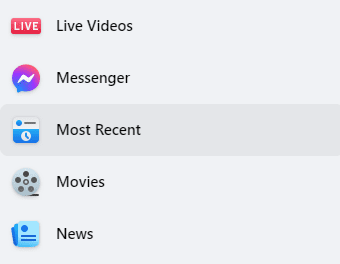
This might seem like a positive for brands at a glance. That said, the default algorithmic feed is still in place and users have to go out of their way to select a chronological feed if they want it. Right now, this change still seems to be flying under the radar.
Additional Surveys and Questionnaires for Users
In recent years, Facebook has taken a more actual role in asking users if a post is considered useful, relevant content versus clickbait or something offensive.
That’s because the platform has faced fierce backlash over both misinformation and spam on the platform.
Through incorporating more feedback such as questionnaires and surveys, Facebook is hoping that brands will focus on meaningful, useful content over engagement bait and controversy.
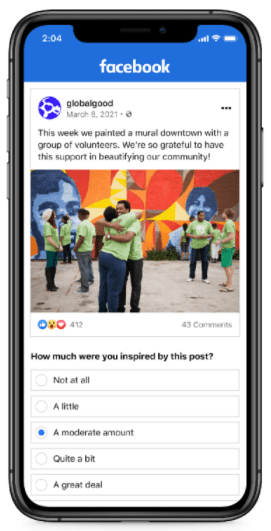
More Advanced Machine Learning
No surprises here.
As the Facebook algorithm evolves, the platform changes how the news feed predicts content you want to see. The inner workings of Facebook’s machine learning are obviously complicated, but the short of it is this: content is served based on individual user activity. Interacting with a certain Page or accounts within a certain industry will result in you seeing more of the same types of content.
For brands, the ability to get your content served to followers is largely based on engagement and interactions. The more opportunities you have to prove that you’re relevant to what your target audience wants, the more likely you are to rank.
So, where do you even start?
8 Tips for Ranking in the Facebook Algorithm
It might seem like the Facebook algorithm is a giant question mark.
But through the platform’s own best practices and reading between the lines of what types of content perform well, we have a pretty good idea of how to “feed” the algorithm what it wants.
We’ve outlined eight action ways to increase the likelihood that the Facebook algorithm will favor your content. If nothing else, these tips will poise your content for more engagement regardless of your current reach.
1. Consistently Publish Content (and Don’t Sacrifice Quality for Quantity)
First thing’s first: you can’t expect to rise in the Facebook algorithm if you’re not publishing regularly.
In fact, Facebook themselves cite consistent posting as a hallmark of growth on the platform. Given the sheer amount of competition, you can’t afford to slack off or post at random if you expect to grow a dedicated following.
How often should you post, though? According to HubSpot’s research, three to four times per week represents a manageable, happy medium for most pages.
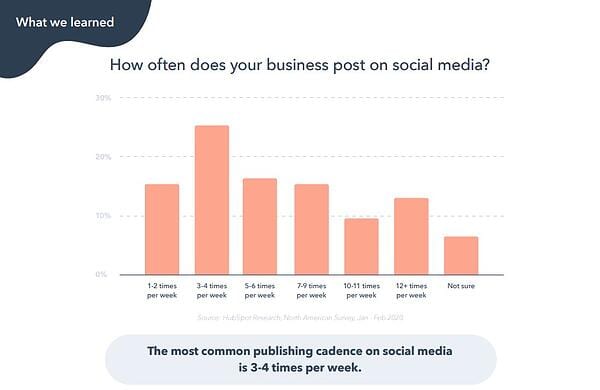
On the flip side, Sprout Social notes that daily posting is ideal (and likewise highlights global engagement data for when followers are most likely to be active).
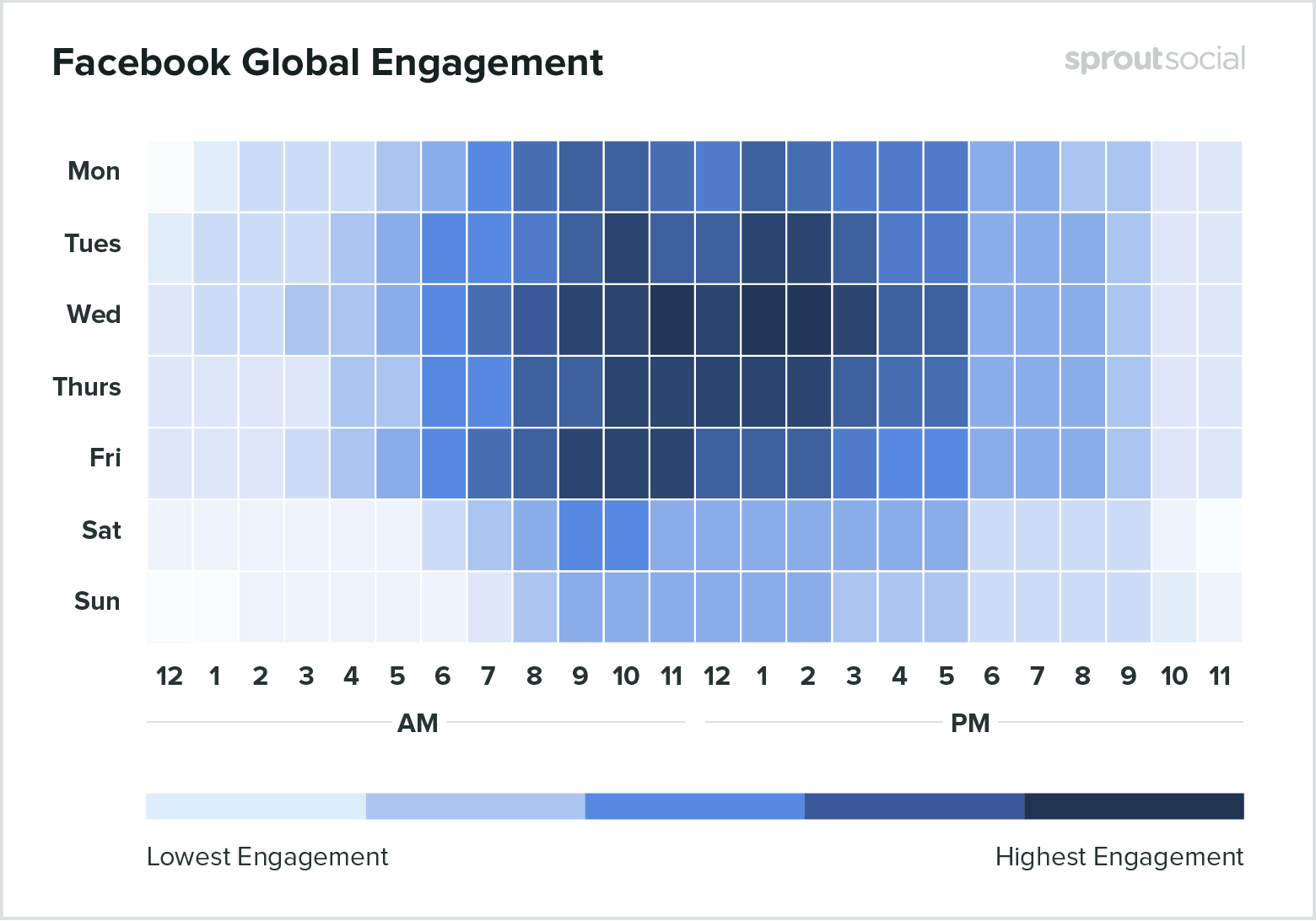
The reality, though? You should publish as often as possible without sacrificing quality for quantity. Don’t scrape for ideas or start publishing “just because.” If providing more value to your audience means less frequency, so be it.
You can likewise look at your firsthand Facebook analytics to see if certain days, times, or frequency correlate with better performance. Once you find your “groove” in terms of posting, stick with it.
2. Publish as Much Video Content as Possible
It’s well-documented that video content is preferred and prioritized by the Facebook algorithm.
In particular, Facebook Live is booming right now as more and more brands hop on the live streaming bandwagon.

Although Facebook recommends videos be between a minute and three minutes long, don’t let that discourage you’re creating shorter-form social video elsewhere.
Whether it’s a live stream from your smartphone or a slideshow of tips, just make sure that your videos are mobile-friendly. Anything you publish to Facebook should be friendly to mobile users and anyone watching with the sound off.
Beyond automatic captions, consider social-specific tools like Animoto or Adobe Spark for making bite-sized videos as well.
3. Encourage Engagement Directly Through Discussions and Questions
Remember: so much of succeeding within the Facebook algorithm is through driving engagement.
As a result, you shouldn’t be shy about prompting your followers with questions. Users are eager to share their opinions and posting questions is a simple, low-hanging way to win interactions from folks who might not even know you yet.

4. Make Sure You’re Driving Conversations Beyond Your Page
Especially if your Page is no or lacks much of a following, personal accounts and Facebook Groups are crucial for giving your presence a much-needed boost. For example, shout-outs from employees or Facebook influencers can help you introduce your brand to more followers than would ever be possible from your own branded account.
5. Prioritize Posts That Keep Users on Facebook (Hint: Don’t Spam Links)
This is a huge tip that many brands unfortunately overlook.
Facebook isn’t the biggest fan of internal links as they bounce people off the platform.
That’s part of why questions, images, and videos are among the most popular posts on Facebook. You can likewise take the content that you otherwise would link out to and condense it into a text or image-based post.
For example, this post from Headspace could have linked out to an article. Instead, they decided to publish the tips as a succinct, friendly list that’s brimming with personality and can be read at a glance.
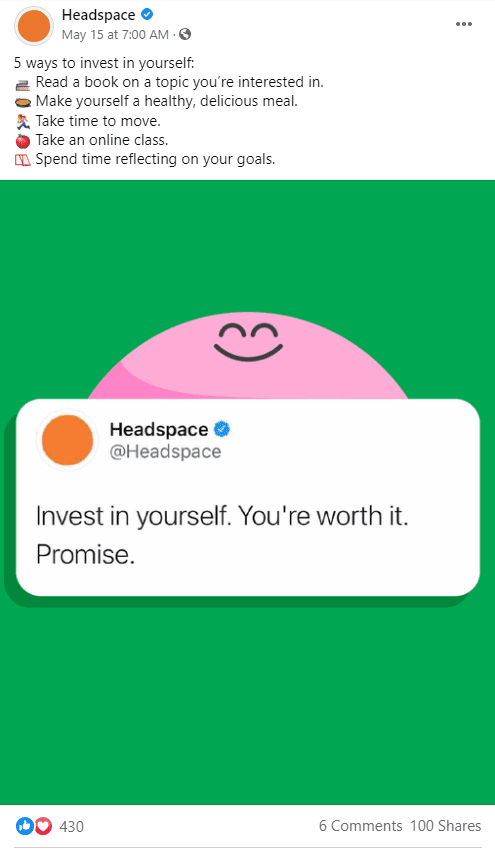
Simple posts like this are easy to read and don’t require people to go off of Facebook. The platform sees that as a win-win and the post itself was obviously favored by the algorithm.
Here’s another example from Thrive Market. Again, they could have linked out to a bug spray recipe off-site but decided to condense the data in a friendly graphic. See how that works?

This isn’t to say you can never post links to your site: just do so sparingly.
6. Engage with Comments and Let Followers Know You’re Listening
Remember: the name of the game with the Facebook algorithm is interactions.
And so it’s a no-brainer that you need to regularly engage with the comments of your fans and followers. Back-and-forths with other users not only lets them know that you’re listening but also represents a positive signal to the algorithm that you’re worth talking to.
Making meaningful interactions means personalizing each of your responses and not just answering with the same lines over and over. Each question, comment, or compliment is a chance to engage: don’t let those moments go to waste.
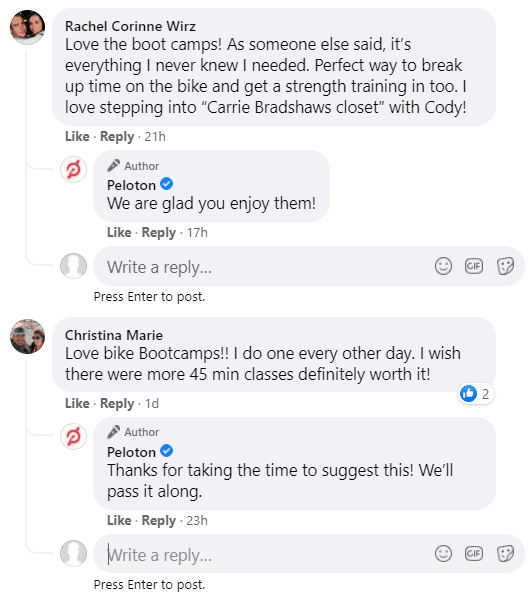
7. Publish Stories to Put Your Page Front-and-Center to Followers
Although this tip doesn’t have a direct impact on the Facebook algorithm, Stories allow you to get exposure in your followers’ feeds without worrying about ranking factors. By putting yourself at the top of someone’s feed, you can drive more attention and traffic to your latest posts.

8. Analyze Your Performance to Figure Out What’s Working (and What’s Not)
You don’t really know how your Page is performing until you put your numbers into context.
Looking at your analytics data, you can figure out which types of content score the most engagement and whether or not you’re growing at a steady pace.
Make a point to check your numbers daily. Tools like Creator Studio can provide big-picture insights when it comes to how you’re doing with the Facebook algorithm…

…and you can also assess posts on an individual basis.

Are You Ready to Tackle the Facebook Algorithm?
Rather than settle for so-so reach, consider the actionable steps you can do to grow your Facebook presence. Sticking to the tips above and keeping a pulse on Facebook’s latest features and updates can definitely do the trick. Either way, consistently posting and monitoring results can help you better understand whether you’re giving the algorithm what it wants.




